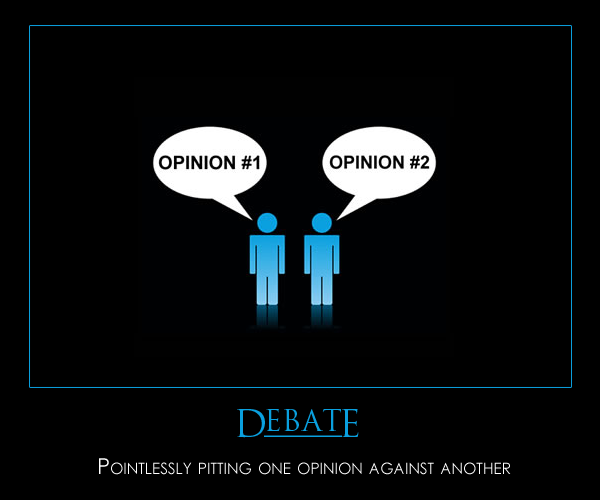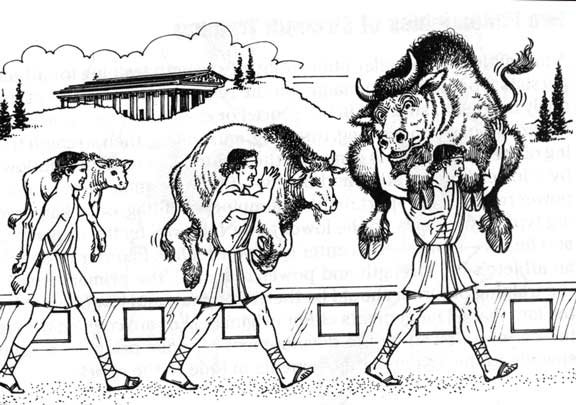1. Routinely change the plane

I’m not talking about transferring airlines from one trip to the next, I’m talking about the angle—the plane of motion—you perform your exercises on. While everyone loves to talk about the need to “change things up” to avert plateaus the real benefit of multi-angle training is minimizing wear and tear on the joints and soft tissue from performing the same exercise in the same plane of motion on a weekly basis. How many rotator cuff surgeries could’ve been avoided if only those guys didn’t bench press every freakin’ week for 7 years straight?
2. See it as a stress
Like it or not, exercise is a negative stress on your body. Anything that leads to you having near 100% of your strength and energy one minute and then 50% of that an hour later (I’m making up the percent drop in ability just to highlight the scenario) is a negative stress. If your body is given enough time to rebound from this stress and defend against it by getting stronger and more resilient, great, you’re making progress. If not then the stress compounds with all the other stressors in your life and your progress comes to an abrupt stop.
3. Weigh the risk

Training hard is a necessity for success; training stupid is not. I’m cool with people doing Crossfit, Olympic lifting, and Powerlifting if they’re competing in those sports. As a competitor you assume certain risk. A recent study published in the Journal of Strength and Condition Research indicated that “Injury rates with CrossFit training are similar to that reported in the literature for sports such as Olympic weight-lifting, power-lifting and gymnastics…” The takeaway is this; if you’re exercising for health, fitness, appearance, or function then you need to consider the vehicle you use to get you there.
4. Get out of your head

Stopping getting in your own way! There is no way to balance your bullshit unsubstantiated negative thoughts and beliefs with your desire for positive results. When you’re in your head you’re dead.
5. Don’t try to outwork a lousy diet

Here’s a double dose of disaster. You have no control over your nutrition so you accumulate more body fat and put additional stress on your body. You try to make up for your poor nutrition by doing more exercise. “If I do sixty minutes of cardio a day on top of my weight training I can eat whatever I want.” Not quite. If you’re a quick learner you remember point #2 and realize that piling on the exercise only creates additional stress. If your body can’t recover from this and other stress it will not function optimally. If it’s not functioning optimally that means your metabolism is not functioning optimally. The only thing your extra exercise will be burning is muscle tissue which further fucks up your situation.
6. Don’t assume more is better
For the exercise zealot your commitment is commendable. However when progress begins to wane the answer is rarely to do more (see #2 and #7). Most notable in young impressionable male lifters who believe the behemoths in the muscle magazines are “natural” and that fourteen plus hours of training a week is normal.
7. Don’t assume less is (always) more
At the opposite and less observed end of the spectrum are the minimalists performing less than thirty-minutes of exercise a week. While something may be better than nothing and this amount of exercise could be enough to help maintain the functionality of someone over the age of seventy, don’t expect to achieve fitness superstardom while under-stimulating your muscles. That said, the best approach is to always do the least amount of exercise necessary to achieve the best result or desired result.
8. Leave the warp speed to Star Trek

You walk into the gym for the first time and you see everyone pumping out reps as though you get an Olympic medal for how fast you complete your set. So what do you do…? That’s what I thought. We all do this because we don’t know any better. The repercussions of such thoughtless exercise performance is best explained in Reppin’ Like a Moron.
9. Get off the ball

It is painful that the circus act resembling trend of functional training using the Bosu or fit ball, has not yet seen a bitter death. There is nothing more “functional” than having well developed muscles that are strong through their natural range of motion. Traditional weight training in a stable environment accomplishes more to this end than attempting to balance on an object. Aside from the safety concerns the argument that such balancing acts involve more muscles is an exercise in displaced rationale (no pun). Sure, you might involve more total muscles but you are also shifting focus away from the one or two that the exercise is intended to target. Strengthening of these muscles is better accomplished in a stable environment where they can be overloaded. As far as the “functionality” aspect. Unless you’re part of Cirque du’ Solei none of your everyday movements or activities requires spectacular balance. (My sister was a gymnast and I was not, yet somehow I’ve been able to function in life just as effectively as her…hmmm).
10. Trading time for work

The time you spend working out is not a measure of the quality of your workout. Take away your walks to the water cooler between sets, the conversation you’re having with your training partner or friend, the two warm-up sets for every exercise, or the time spent letting everyone on Facebook and Twitter know you’re at the gym, and how much time is spent on productive exercise or sets that actually have the potential to stimulate results. You can train six hours a week or sixty minutes and produce the same exact result if the “quality time” is the same.
11. Better on paper
When I say “better on paper” I don’t mean what the stats say about who should win the game between the Miami Dolphins and Cleveland Browns. Football fans knows that regardless of who should win according to the stats, it’ doesn’t always turn out that way. So why track them? Because it gives you a better overall view of what areas need improvement and they can help you formulate a better game plan. Having a running record of your exercise performance or nutrition helps to uncover clues about what’s working and what’s not. You can save yourself years of poor results simply by making sure you’re getting better on paper. You can measure your weight, your reps, your time under tension, your body weight, body composition, energy levels, etc.
12. Same thing, too often
The body is a pretty extraordinary machine. One of its most remarkable features is its ability to adapt to external demands. Everything from building muscle, to increasing strength, to having greater endurance, and a host of other fitness related outcomes is an adaptation to the demands we impose on ourselves through exercise. So good is this ability to adapt that after repeated exposures we look for the most efficient way to deal with these demands. And this consequently becomes the source of the fitness enthusiasts’ frustration regarding a lack of progress. What I mean is, at a certain point our bodies get accustomed to the demands of exercise, especially when it’s performed the same way week after week, and it doesn’t sense a need to add more muscle or increase strength, or whatever outcome you’re chasing. However before you think I’m on some Tony Horton P90x bullshit read my Holy Shift post.
13. Crowning a variable as King
 You ever have one of those clingy girlfriends or boyfriends? They need to constantly be around you and damn you if you’re not doing something every 5 minutes to make them feel special. They latch onto you like I latch onto my shotgun and NRA membership card. We know that being clingy is unhealthy yet some people insist on clinging to a certain training variable, put it on a pedestal and claim it as King of all Variables. Volume is not any more important than intensity, than intensity is any more important than frequency, or frequency any more important than volume, and on and on. The key is to figure out when a little more or a little less of any or all of them is necessary.
You ever have one of those clingy girlfriends or boyfriends? They need to constantly be around you and damn you if you’re not doing something every 5 minutes to make them feel special. They latch onto you like I latch onto my shotgun and NRA membership card. We know that being clingy is unhealthy yet some people insist on clinging to a certain training variable, put it on a pedestal and claim it as King of all Variables. Volume is not any more important than intensity, than intensity is any more important than frequency, or frequency any more important than volume, and on and on. The key is to figure out when a little more or a little less of any or all of them is necessary.
14. Choosing cardio over weights

At this point this one should not even need to be listed. But a quick observation of what the people pounding away in the cardio section look like compared to the ones (seriously training) in the weight training area tells me that some people still haven’t gotten the memo. The short of it—since it’s been written about a hundred bazillion times—is that cardio in excess (HIIT does not get lumped in here) is a muscle wasting metabolism killer. Properly performed weight training is a muscle building, ass sculpting, metabolism enhancing, osteoporosis preventing, anti-aging, energy producing, sex drive heightening juggernaut.
15. Comparison with others
You are an individual…you have your own set of advantages…your own limitations…your own needs. No matter what you do, or how hard you try, you will never under any circumstances be that person over there. So why are you comparing yourself to them? Uncover your individual needs and satisfy them…not someone else’s.
__________________________________________________________________
Thanks for reading this! If you got value from this or other articles, it would mean a lot to me for you to scroll down a bit farther and hit the recommend button.





 I have nothing against “fitness experts.” In fact I regularly seek out, read, listen to, and pick the brains of people (not in a Walking Dead sort of way) that I consider to be experts in various areas of exercise because in quiet moments of self-reflection I realize that I don’t know it all. Hard to believe I know. I like hearing different points of view, especially the diametrically opposing ones. As Stephen Covey put it in The 7 Habits of Highly Effective People, “seek to understand.” If I’m able to understand their point of view then I’ll either glean new insight and apply it to what I do, ooooooooor I’ll bang my head against a wall thirty-two times as a preventative measure to ensure the information doesn’t settle into my brain.
I have nothing against “fitness experts.” In fact I regularly seek out, read, listen to, and pick the brains of people (not in a Walking Dead sort of way) that I consider to be experts in various areas of exercise because in quiet moments of self-reflection I realize that I don’t know it all. Hard to believe I know. I like hearing different points of view, especially the diametrically opposing ones. As Stephen Covey put it in The 7 Habits of Highly Effective People, “seek to understand.” If I’m able to understand their point of view then I’ll either glean new insight and apply it to what I do, ooooooooor I’ll bang my head against a wall thirty-two times as a preventative measure to ensure the information doesn’t settle into my brain.







 You ever have one of those clingy girlfriends or boyfriends? They need to constantly be around you and damn you if you’re not doing something every 5 minutes to make them feel special. They latch onto you like I latch onto my shotgun and NRA membership card. We know that being clingy is unhealthy yet some people insist on clinging to a certain training variable, put it on a pedestal and claim it as King of all Variables. Volume is not any more important than intensity, than intensity is any more important than frequency, or frequency any more important than volume, and on and on. The key is to figure out when a little more or a little less of any or all of them is necessary.
You ever have one of those clingy girlfriends or boyfriends? They need to constantly be around you and damn you if you’re not doing something every 5 minutes to make them feel special. They latch onto you like I latch onto my shotgun and NRA membership card. We know that being clingy is unhealthy yet some people insist on clinging to a certain training variable, put it on a pedestal and claim it as King of all Variables. Volume is not any more important than intensity, than intensity is any more important than frequency, or frequency any more important than volume, and on and on. The key is to figure out when a little more or a little less of any or all of them is necessary.

















